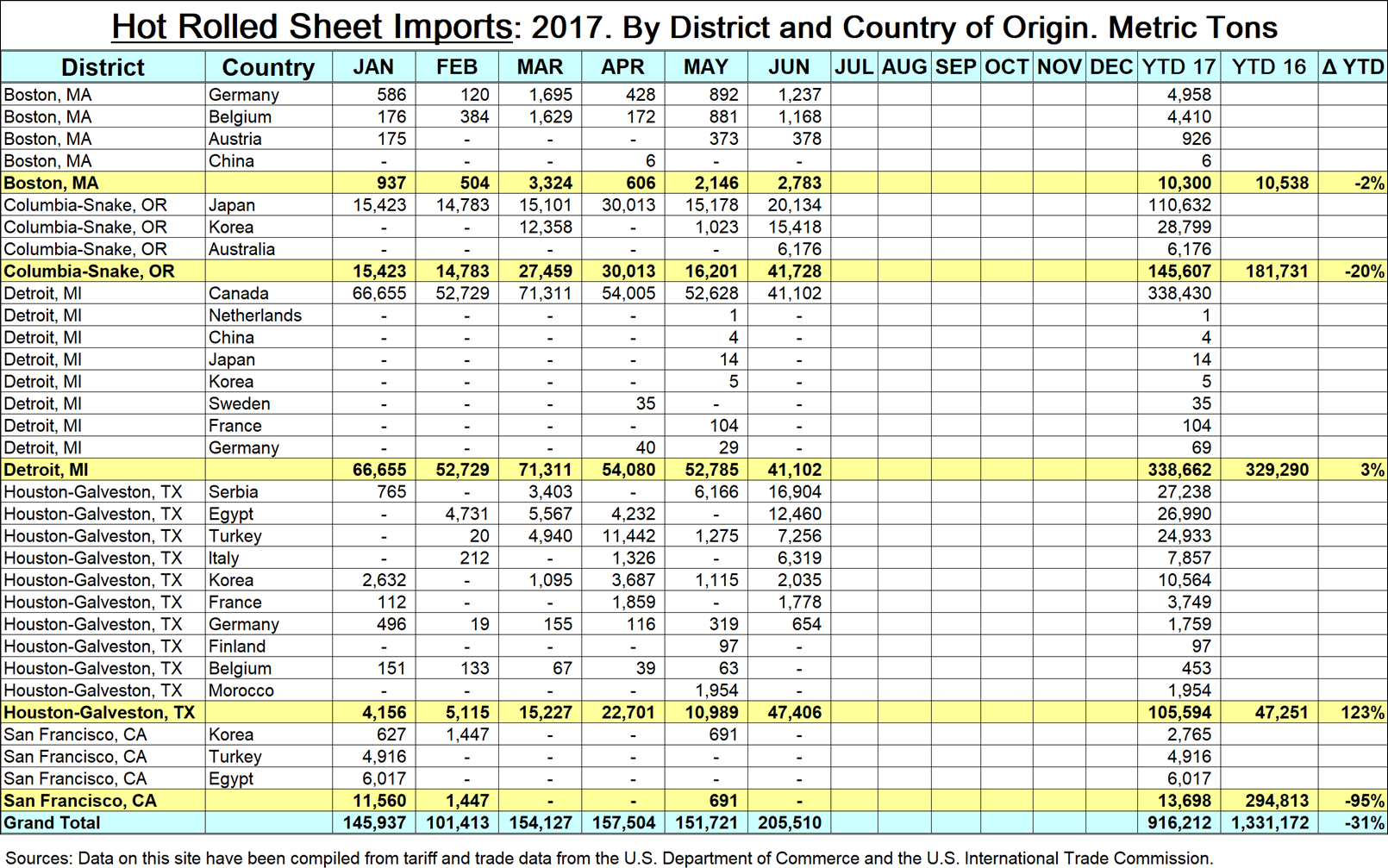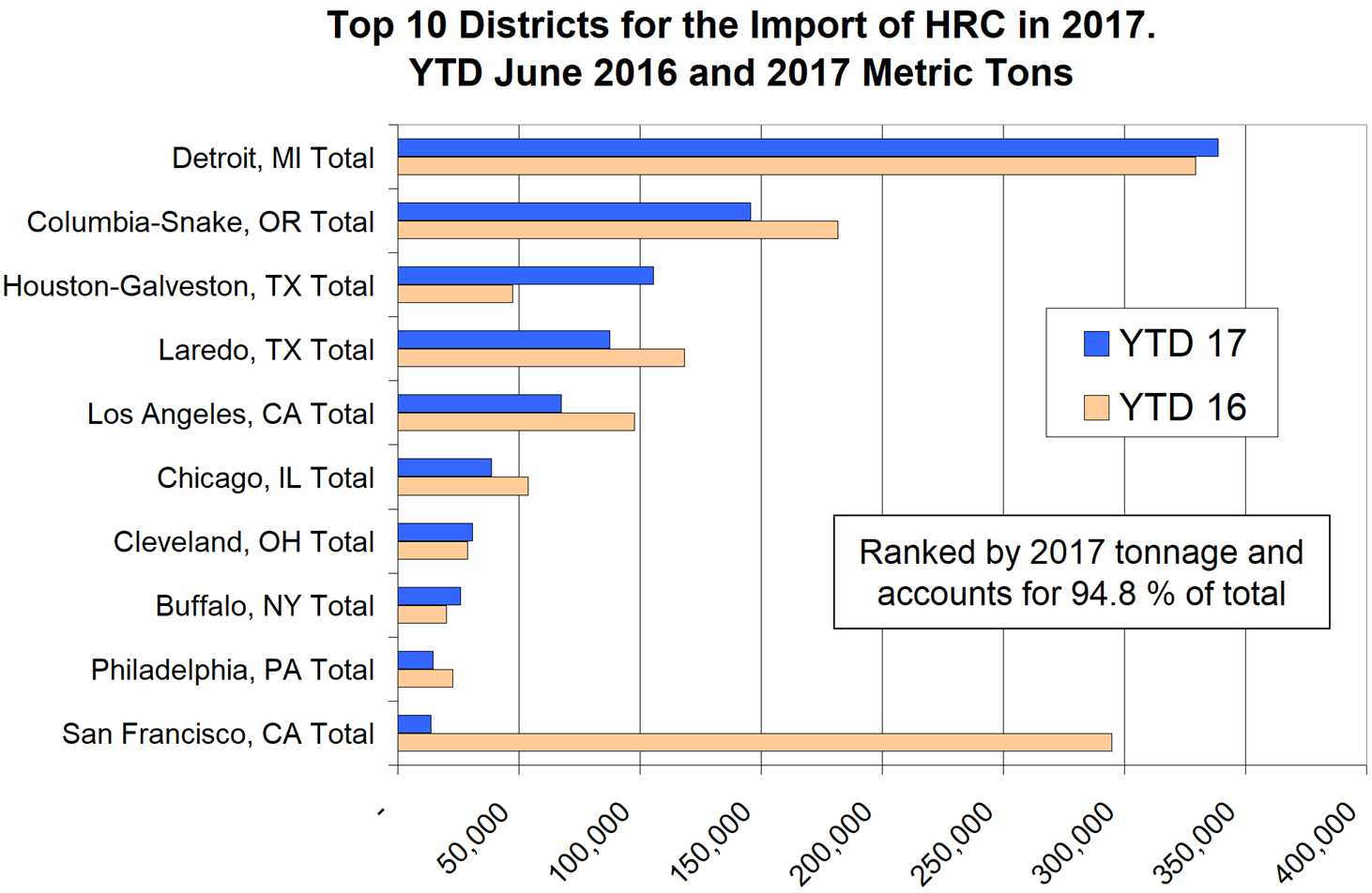Prices

August 9, 2017
Sheet Steel Imports by District of Entry, Source
Written by Peter Wright
Editor’s note: As a special bonus, we are sharing this premium-level article with all our subscribers:
We believe that misinformation (or lack of) about regional import volumes is often used to influence purchase decisions. Our intent with this analysis of tonnage by district of entry is to describe in detail what is going on in a company’s immediate neighborhood and thus provide a negotiating advantage for our subscribers.
![]() We are now publishing monthly data in the Imports/Exports section of our website that breaks down the tonnage of the four major sheet products (hot rolled, cold rolled, hot-dipped galvanized, and other metallic coated) into the port of entry and country of origin in metric tons through June. This data set is large; therefore, we will make no attempt to provide a commentary. Each reader’s interest will be different and he/she simply needs to select one of the four products, then find the nearest port or ports of entry to see how much came into the region each month and from where. It is clear from these detailed reports that the growth of tonnage entering a particular district in many (or most) cases is completely different to the change in volume at the national level.
We are now publishing monthly data in the Imports/Exports section of our website that breaks down the tonnage of the four major sheet products (hot rolled, cold rolled, hot-dipped galvanized, and other metallic coated) into the port of entry and country of origin in metric tons through June. This data set is large; therefore, we will make no attempt to provide a commentary. Each reader’s interest will be different and he/she simply needs to select one of the four products, then find the nearest port or ports of entry to see how much came into the region each month and from where. It is clear from these detailed reports that the growth of tonnage entering a particular district in many (or most) cases is completely different to the change in volume at the national level.
This month we will use HRC to make our point. In 2017 through June, 916,212 metric tons of HRC had entered the country, which was a decrease of 31.2 percent from the first six months of 2016. As an illustration of regional differences, Houston was up by 123 percent and San Francisco was down by 95 percent. The table included here (click to enlarge) is a small extract from one of the four spreadsheets in the premium section of our website, which spell out the monthly tonnage by source for 33 districts around the country for HRC, CRC, HDG and OMC.
The discrepancy between the change in the national total and the individual regional changes is why we think it’s important for both market understanding and negotiating position to know what is going on in your own backyard.
The chart shows graphically the tonnage of HRC that entered the top 10 districts in YTD June for 2016 and 2017 and is ranked by 2017 tonnage. These 10 districts account for 94.8 percent of the grand total in 2017. Detroit received the most tonnage through June 2017 and was up by 2.8 percent year over year, Columbia Snake was in second place by volume, down by 19.9 percent.
The data in these detailed reports is compiled from tariff and trade data from the U.S. Department of Commerce and the U.S. International Trade Commission. Our other import reports are sourced from U.S. Department of Commerce, Enforcement and Compliance, aka the Steel Import Monitoring System. In the development of these reports by district and source country, we have discovered that the SIMA data for HRC and CRC contains some high alloy steel such as stainless and tool steel that has been misclassified at the ports. These alloy steels are not included in our detailed reports, which results in a discrepancy between the two data sets, for CRC in particular and for HRC to a lesser degree.









